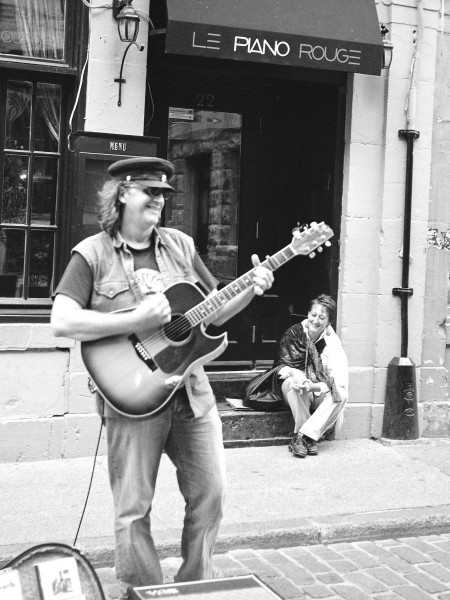
Cash for Clothes
Most of the time, we adjust color subtly, bringing out a nuance here and highlighting a hue there. Occasionally, an images has the potential for a wilder palate, with bright colors that call out for us to stick our heads in the paint pot, grab Curves with our hands, and manipulate wildly.
This midnight picture of a University Avenue used clothing display, with its bright window against the nighttime street and garish display of mannikins called for drastic measures. I shoved Contrast to the max, then twisted Curves like a pretzel, darkening the low values to diminish the street’s presence (unintentionally highlighting the two ghosts who paused briefly during the exposure) and accentuating the colored brightness of the window. Local Contrast Enhancement from Astronomy Tools brought out the clothing detail. The final product is a picture with something to say!
Taken with the 1950 Voigtlander Bessa on a tripod, time exposure at f/22 on Kodak VC-160.




